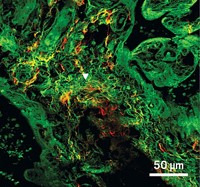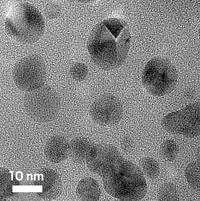Advertisement
Grab your lab coat. Let's get started
Welcome!
Welcome!
Create an account below to get 6 C&EN articles per month, receive newsletters and more - all free.
It seems this is your first time logging in online. Please enter the following information to continue.
As an ACS member you automatically get access to this site. All we need is few more details to create your reading experience.
Not you? Sign in with a different account.
Not you? Sign in with a different account.
ERROR 1
ERROR 1
ERROR 2
ERROR 2
ERROR 2
ERROR 2
ERROR 2
Password and Confirm password must match.
If you have an ACS member number, please enter it here so we can link this account to your membership. (optional)
ERROR 2
ACS values your privacy. By submitting your information, you are gaining access to C&EN and subscribing to our weekly newsletter. We use the information you provide to make your reading experience better, and we will never sell your data to third party members.
Materials
Hip Replacement Wear And Tear
Cobalt and chromium ions, nanoparticles accumulate in tissue surrounding implants
by Bethany Halford
June 25, 2012
| A version of this story appeared in
Volume 90, Issue 26
Nanoparticulate debris generated when the pieces of cobalt-chromium alloy metal-on-metal hip replacements rub together has been fingered as the cause of premature failure of those devices. But precisely what metal species are getting into the tissues around these implants and causing inflammation has been something of a mystery. A team led by Alexandra E. Porter and Mary P. Ryan of Imperial College London and David W. McComb of Ohio State University has now used X-ray absorption spectroscopy and electron energy loss spectroscopy to characterize the nature of these breakdown products for the first time (Chem. Commun., DOI: 10.1039/c2cc33016d). The researchers examined tissue taken from around a failed implant and found the metal-wear products in two distinct chemical states in macrophages—the cells whose job it is to clean up debris. They noted a small amount of metallic cobalt and chromium nanoparticles, but the majority of what they observed was Cr3+ ions. What they didn’t see much of was cobalt, suggesting that much of that element had been released into the bloodstream as Co2+, which is known to be genotoxic. They believe cobalt ions are the likely culprits behind the inflammatory response.





Join the conversation
Contact the reporter
Submit a Letter to the Editor for publication
Engage with us on Twitter